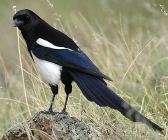Images to Pass Around
 Looking for ways to get your local monthly meeting off dead-center, vis-à-vis environmental matters?
Looking for ways to get your local monthly meeting off dead-center, vis-à-vis environmental matters?
Looking for ways to get your co-workers, friends and neighbors thinking about life-style changes?
Just show them the images below.
The first pair: what’s happening at the Pole
Minimum sea ice, September 1979 — more than 3 million square miles of it. Source: NASA.
The image above, generated from satellite data, shows the extent of Arctic sea ice at the end of the northern summer in 1979. The one below shows the extent of the ice twenty-six years later, at the end of the summer in 2005.
Minimum sea ice, September 2005 — just 2.05 million square miles of it. Source: NASA.
The second pair: what’s happening at home
Plant hardiness zones, 1990. Source: National Arbor Day Foundation.
The map above is a chart of where plants of various sorts would grow in 1990. Zone 3, at the top, would grow only plants that could survive winter cold snaps below -30° F — plants like the arborvitae, the aspen and birch, the Canadian hemlock, some of the tougher junipers, maples, oaks, pines, and spruces, and (from Siberia) the dwarf Russian almond. Zone 10, at the bottom of the map, would grow even subtropical plants that would die if the temperature ever fell below +40° F.
The map below, just recently compiled by the National Arbor Day Foundation using weather data from 5,000 stations throughout the U.S., shows where the same plants would grow in 2006:
Plant hardiness zones, 2006. Source: National Arbor Day Foundation.
Invite your meeting, your co-workers, your neighbors and friends to find themselves on these maps. Invite them to imagine the situations of animals and plants that need a certain sort of climate.
Ask them what they think it will be like in another sixteen years.
 Please.
Please.








Reader Comments (2)
Repeating part of a comment to another post, temperatures have risen 0.8 C and we are committed to 0.6 C more, as the Earth continues to warm from the greenhouse gases we have already added. Someone wrote me that fossil fuel pollution (unlike nuclear pollution, she said) goes away if (a major if) we turn off the plant.Unfortunately, the consequences will actually be much longer lasting.
Are people showing these pictures to their Meetings? Are people able to see the need to change in these pictures? We're only about halfway to final temperature consequences of greenhouse gases already added, and less than halfway to final sea level rise.
Great news from Berkeley Meeting: the Committee on the Environment has begun bringing climate change minutes to Monthly Meeting. And College Park Quarter (northern quarter in Pacific YM) discusses Strawberry Creek's minute Saturday.
Very good news indeed from Berkeley MM and College Park QM. The latter will be in my prayers tomorrow while I'm at work!